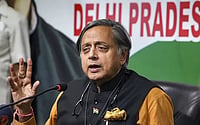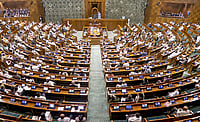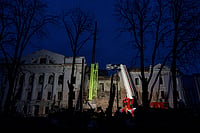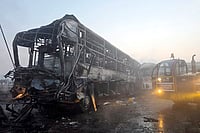If the poet Mirza Asadullah Khan Ghalib is to be believed, Delhi’s personality was formed and defined by the Lal Qila or Red Fort, constructed in 1657-8. Once called the ‘Qila Mubarak’ (AuspiciousFortress), the palace-fortress of Emperor Shahjahan is today a World Heritage site. Appropriately enough, N.L. Batra, formerly in the Archaeological Survey of India and author of a similar book on Delhi’s Juma Masjid, has produced an illustrated book on the Red Fort. The pictures bring alive some of the most elegant structures within the Fort. ‘Verily if there is Paradise on earth; It is this, it is this, it this.’
If you don’t already know it, turn to Batra’s text for a bird’s eye view of the history of Shahjahanabad, the site ofnot only some other magnificent buildings and mosques but also the home of a Delhi Renaissance. The Urdu poet wrote:
It’s this city that was
Man’s and djinn’s heart;
Its this city that was all India’s heart;
It’s this city that was the whole world’s heart …
The basic dimensions of this red sandstone structure were 3100 feet by 1650 feet, enclosing an area of about 125 acres. The walls were 60 feet in height along the river to 75 feet on the landward side; in width, from 45 feet at the base to 30 feet at the top. A long moat, 75 feet wide and 30 feet deep, surrounded the fort on the landward side. The foreign traveler Manucci gives a description of a canal from a river adjacent to Sirhind, 100 miles away, flowing into the fortress filling the water-channels.
Today, you see the tricolour fluttering. This was not always so. Indeed, the Red Fort itself has been a witness to Delhi’s changing fortunes, its high and its low points. In 1739, Nadir Shah’s army brought death and destruction to the city. He carried away the Peacock Throne from the Diwan-i Khas. Ahmad Khan Abdali in 1756 and the Marathas in 1759 added to the woes of theDilliwala.
The Red Fort was the scene of a series of intrigues in the early nineteenth century until the arrest of Bahadur Shah, the last Mughal emperor, closed a major chapter in Indian history. ‘A candle, ravaged for its carousing has been gutted out; it too is silent, without any flame, bemoanedGhalib.
Under the British, the Red Fort saw vivid expressions of imperial grandeur, pageantry, and power: first in 1887 and then in 1903. Eight years later, in 1911, another reign had begun with George V, crowned as emperor of India on 12 December 1912, His durbar had to be even more splendid than Curzon’s, bringing princely India and British India in festivals of chivalric unity, feudal hierarchy, and imperial subordination.
On 7 December, the royal train reached Delhi for the spectacular pageant for which the Indian taxpayer footed the bill, a mind-boggling 6,60,000 pounds sterling. Astride a horse on a perfect winter’s day with a bright sun, blue sky and cool breeze, the king emperor’s state entry passed through Red Fort and on to the large maidan between the stately fort and the gleaming domes of Juma Masjid. It was a perfect setting for the imperial progress; an elaborate extravaganza watched by, in the durbar amphitheatre, 4000 special guests, 70,000 spectators, and 35,000 troops. In the words of a poet:
O Zauq, we are leaving the garden of this world full of passionate longings,
It does not concern us in the least whether or not the morning breeze henceforth bloweth here.


























